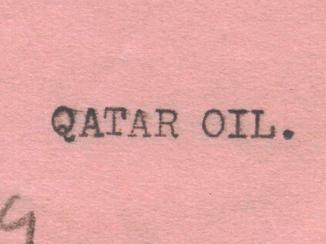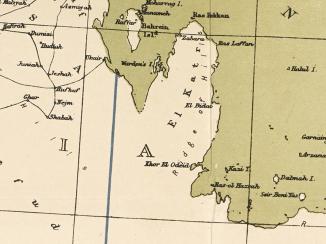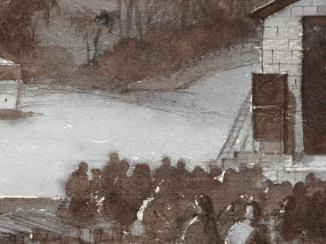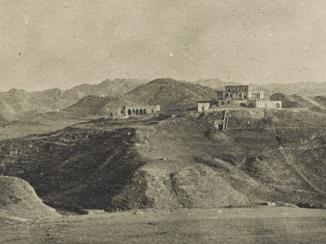Overview
The small island of Kharg, situated in the Gulf just off the coast of modern-day Iran, played a vital role in the history of Persia’s Gulf coast.
Alongside the architecture of successive native populations can be found Parthian and Nabataean remains, Christian architecture, and the remnants of the Dutch period of occupation (1753–65) as well as evidence of twentieth century attempts to ‘Iranianize’ the island. The island was contested throughout history, not least because the water was, according to James Horsburgh’s The India Directory, better quality than that available at Bushire.
In more recent times, the depth of the sea and the proximity of Kharg to the Iranian coast made it an ideal port for large oil ships. However, Kharg’s strategic position was the driving force behind two British occupations of the island; one in 1838 and another in 1856.
The Dutch and the British
After the famous Persian pirate, Mīr Muhannā, took back Kharg from the Dutch in 1765 by ‘luring them out of their fortress on the pretence of negotiation and then simply taking it from them’, the island had become a part of Persia. But it was subsequently seized twice by the British during the nineteenth century because they saw it as a strategic outpost on the Persian side of the Gulf.
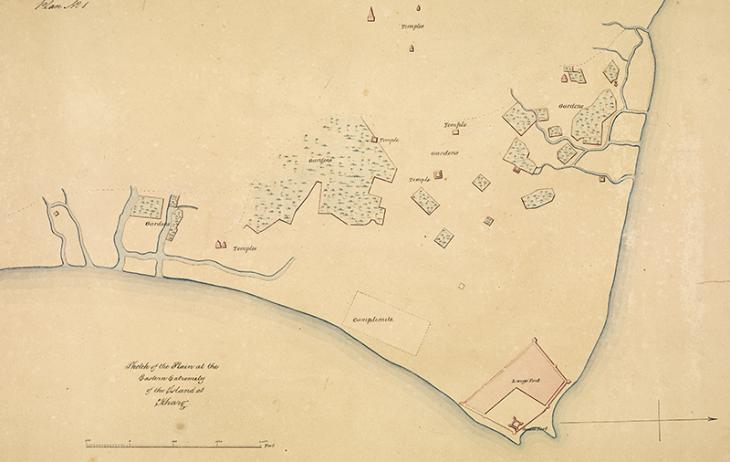
The first period of British occupation lasted from 1838 to 1842, when the island became part of a strategic plan to force the Persians to withdraw from the Afghan city of Herat. In fact, around 1839–42, it was planned to relocate the British Residency An office of the East India Company and, later, of the British Raj, established in the provinces and regions considered part of, or under the influence of, British India. from Bushire to Kharg.
Though the officiating British Resident, Henry Dundas Robertson, hoped to use the island as a summer residence in 1842, at some point that year the British withdrew and the Persians reoccupied the island.
A second occupation was planned in January 1853, as a result of the suspension of Anglo-Persian relations. The Persian garrison on the island was reinforced by an extra five hundred Persian solders in December that year as a response to the planned British occupation.
The Second Occupation
From the 1830s it was thought that the best way to safeguard Britain’s interests following the rupture of diplomatic relations with Persia as well as some maritime hostilities along the coastline near Kharg, would be to have a small force at ‘Karrack’ (as Kharg was known at the time) as well as at Bushire.
The second siege took place on 3 December 1856, when a proclamation signed by Felix Jones, Political Agent A mid-ranking political representative (equivalent to a Consul) from the diplomatic corps of the Government of India or one of its subordinate provincial governments, in charge of a Political Agency. with the Field Force and Resident in the Persian Gulf The historical term used to describe the body of water between the Arabian Peninsula and Iran. , was read to the assembly of the inhabitants of the island before being attached to the gate of the island’s fort for all to read. The proclamation listed the rights and duties of the inhabitants of the island, who were now subject to Her Majesty Queen Victoria’s authority.
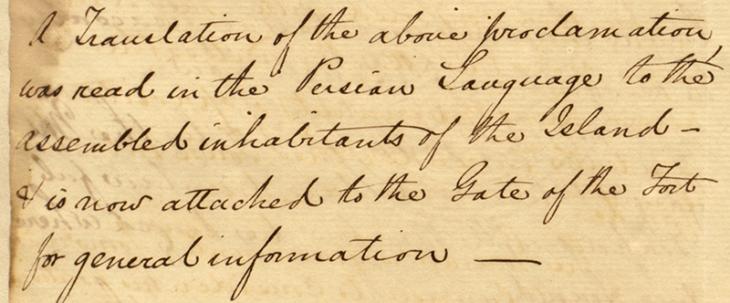
Reoccupation by Persia
Captain Stiffe, of the Royal India Marine (R.I.M.), records that at the time of the second Persian Gulf The historical term used to describe the body of water between the Arabian Peninsula and Iran. Survey (1857–60) the population of the island was estimated to be around four hundred men, in addition to a Persian garrison quartered in the citadel of the otherwise ruined Dutch fort. As soon as the Anglo-Persian peace treaty was ratified in May 1857, instructions were sent to the British garrison to leave the island.
After Kharg became part of Persia, the traditional activities of fishing, growing dates and pearling once again became the primary occupation for its inhabitants.
Kharg Today
The discovery of oil only added to the strategic importance of Kharg. As of 2012, approximately ninety percent of Iran’s crude oil was distributed via the oil terminal on Kharg Island. During the Iran–Iraq War, Iraq bombed the island, badly damaging the pipelines and facilities there. After the war, Iran gradually repaired and restored them. Today, the island is so much a part of Iranian national identity, in particular the sense of its strategic importance, that it has featured in two videogames: one, called Battlefield 3, which takes place on the island and another, which takes inspiration from the adventures of Mīr Muhannā.



